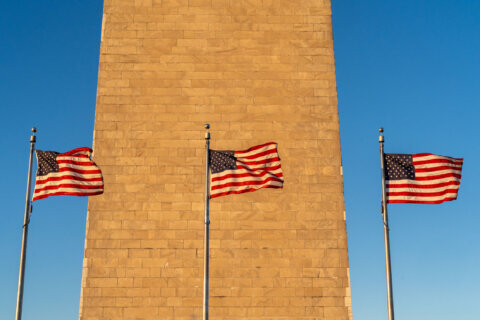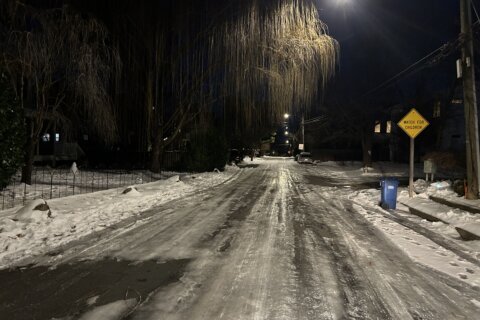A new category of wireless emergency alerts should only startle you every-so-often, but the National Weather Service wants you to be aware when severe thunderstorms capable of severe damage are near your location.
“These wireless alerts could be lifesaving,’ said WTOP Traffic Reporter Dave Dildine. “They’re reserved for potentially life-threatening weather.”
National Weather Service meteorologist Chris Strong tells WTOP the weather service alert will allow NWS to “more aggressively warn people for extremely dangerous situations.”
Strong said NWS started providing more context, reaching people’s ubiquitous cellphones, with its tornado warnings, and added flash flood warnings, “and now we’re moving that successful paradigm into severe thunderstorm warnings.”
The weather service introduced new categories to better convey the severity and potential impacts from thunderstorm winds. The categories, in order of highest to lowest damage threat, are destructive, considerable and baseline.
A “destructive” damage threat is at least 2.75-inch diameter hail — often referred to as “baseball- sized hail” — and/or 80 mph thunderstorm winds. This scenario would trigger a wireless emergency alert.
The criteria for a “considerable” damage threat is 1.75-inch diameter — or “golf ball-sized hail” — and/or 70 mph winds. These conditions would not activate a wireless emergency alert.
The criteria for baseline severe thunderstorm warning remains unchanged, with 1 inch — or “quarter-sized hail” — and/or winds of at least 58 mph.
Starting August 2, Severe Thunderstorms deemed “destructive” will activate a Wireless Emergency Alert (WEA) on smartphones. Criteria for a destructive threat is at least 2.75 inch diameter hail and/or 80 mph thunderstorm winds.
Read more: https://t.co/Vu9HyjsoRw pic.twitter.com/XeRvkwgSY0
— National Weather Service (@NWS) July 27, 2021
“The vast majority of our severe thunderstorm warnings fall well short of destructive criteria,” said Dildine, who expects the weather service will be judicious in triggering the alerts. “They’re careful not to over-warn, because they don’t want people to tune these out.”
The NWS’s Strong agreed.
“We don’t want to hit everybody’s cellphone for many times in summer where we have severe thunderstorm warning around the area, but for these truly widespread, dangerous situations, we want to have a way to really reach out and hit people like we do with tornado warnings,” Strong said.
Dildine, whose career has included weather research and storm chasing, said the alerts for thunderstorms with the potential for destructive damage should be rare: “We don’t see storms like this very often, thankfully. We did in 2012. The 2012 derecho is a good example of an event that would warrant one of these high-priority warnings.”
The National Weather Service said about 10% of all severe thunderstorms reach the destructive category, each year, nationwide. The weather service said 13 of the 22 costliest weather disasters in 2020 were severe thunderstorms.








